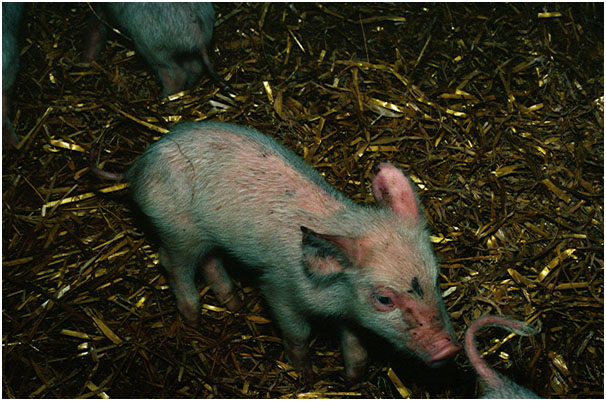Quo vadis? The EU on antimicrobial resistance

In the latest report from the EU Parliament, there is a major move towards consensus with the EU Commission and Council on antimicrobial resistance, in spite of their over dramatisation of the potential return to the “pre-antibiotic era”.
Prevention:
They say there should be a focus on disease prevention and this should be achieved via better husbandry. However, they want to stop the prevention use of antibiotics. That is ideal but in the meantime what do you do with the post-weaned pig, when things go wrong and there is runting, stunting and even death (see Photo 1)?
What do you do when a group of growers goes down with Streptococcus suis meningitis and they are collapsing, paddling and even dying (see Photo 2)?
Yes we like to see weaners growing strongly and well (see Photo 3) but many countries are on preventive medication (including the Danes) to prevent post-weaning diarrhoeas. The main product is zinc oxide but those countries that do not use it (such as the Netherlands) have to resort to antibiotics, when things go wrong. There seems to be some naivety, almost double standards.
The right to prescribe and dispense:
They want vets to have the right to prescribe antimicrobials but feel that they should be separated from the right to sell or dispense these drugs, so as to avoid creating economic incentives to prescribe. This sounds good but does it work. Italian vets have not dispensed antibiotics for years and they still have a number of major resistance issues in pigs. Medical doctors also mainly prescribe, and it may be considered that the dissociation from prescription and dispensing have led them to over-prescribe. It will have no impact on reducing overall resistance development.
Data availability:
Several times in the report it appears: – The EP “is of the view that data gathered on the use of antibiotics should be made accessible only to the experts, authorities and decision-makers concerned.” This sounds like appalling censorship and should not be allowed.
Conclusions:
It has been a most stimulating year regarding the use of antimicrobials and resistance in pig medicine and next year the debate is likely to continue until the EU Commission finally presents its road map.
Otherwise, I am left to wish all those involved in the global pig industry a very Happy Christmas and a prosperous New Year and to remind you to use antibiotics, responsibly, it is the only way forward.







